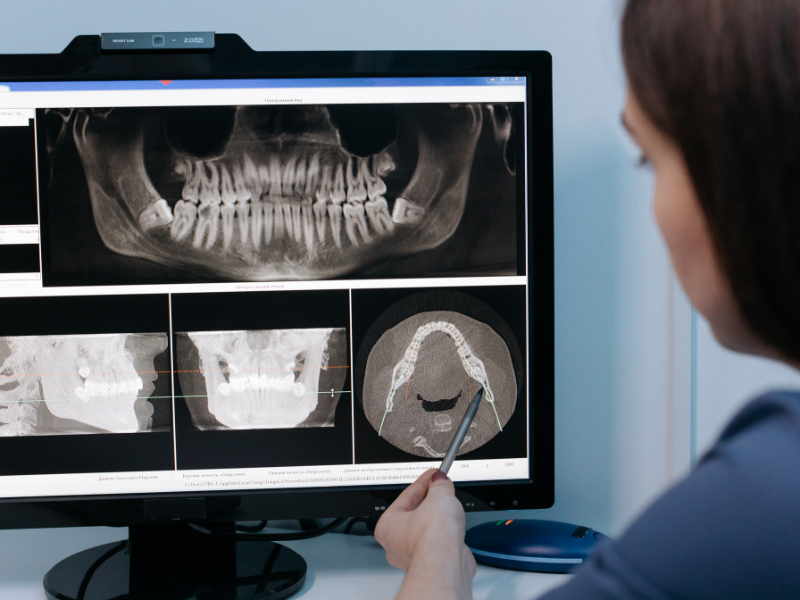In the ever-evolving landscape of healthcare, dentistry has not remained untouched by the technological revolution that promises a new era of efficiency, precision, and patient comfort. Modern dentistry is witnessing the integration of cutting-edge technologies such as digital X-rays, 3D printing, and laser treatments, each contributing to a radical transformation in dental practices. This article delves into these technologies, exploring their functionalities, benefits, and the transformative effect they have on dental care delivery.
The Digital Leap: Enhanced Imaging with Digital X-rays
The transition from traditional film-based X-rays to digital X-rays marks a significant advancement in dental diagnostics. Digital X-rays stand at the forefront of this change, offering a multitude of advantages over their analog counterparts. They use electronic sensors to capture detailed images of the oral cavity, significantly reducing the patient’s exposure to radiation. Besides safety, the clarity and speed with which these images are produced allow for immediate review and diagnosis, facilitating a more efficient treatment planning process.
Digital X-rays also promote an eco-friendly approach to dentistry, eliminating the need for chemical processing and reducing hazardous waste. Their digital nature allows for easy storage and sharing among dental professionals, fostering a collaborative approach to patient care that was more cumbersome with film X-rays.
Crafting Precision: The Role of 3D Printing in Dentistry
3D printing technology, with its roots spreading across various industries, has found a particularly impactful application in dentistry. It revolutionizes the way dental prosthetics, orthodontic devices, and even surgical guides are created. Through additive manufacturing, 3D printers build these items layer by layer, allowing for an unprecedented level of customization and precision.
This technology reduces the turnaround time for creating dental appliances, making treatments faster and more accessible to patients. It also opens the door to innovative treatment options, such as bio-compatible materials for implants and prostheses that mimic the natural appearance and functionality of teeth more closely than ever before.
Gentle and Precise: The Advancements of Laser Dentistry
Laser dentistry represents one of the most significant technological advancements in the field, offering a minimally invasive alternative to traditional dental tools. Lasers deliver focused light energy to perform a wide range of procedures, from cavity preparation and gum reshaping to the removal of soft tissue and the treatment of periodontal disease.
The precision of laser dentistry minimizes damage to surrounding tissues, leading to less pain and quicker healing times for patients. It also reduces the need for sutures and anesthesia in many cases, making dental visits less daunting and more comfortable. Furthermore, laser treatments can often be more effective in sterilizing the affected area, reducing the risk of infection and promoting better overall outcomes.
The Comprehensive Impact of Technological Integration in Dental Care
The incorporation of these technologies into dental practices has far-reaching implications for both practitioners and patients. For dentists, the use of digital X-rays, 3D printing, and laser treatments enhances diagnostic capabilities, streamlines the creation of dental appliances, and expands the range of treatments available. This not only improves the quality of care but also increases the efficiency of dental procedures, allowing practitioners to serve their patients with greater precision and speed.
Patients stand to benefit immensely from these technological advancements. The shift towards less invasive and more accurate treatments means that dental visits are no longer associated with discomfort and anxiety. Faster recovery times, improved outcomes, and the ability to receive personalized treatments tailored to individual needs significantly enhance the patient experience. Additionally, the digitalization of dental records and imaging facilitates better communication between patients and their healthcare providers, enabling more informed decision-making and patient involvement in their treatment plans.
Looking Ahead: The Future of Dentistry Powered by Technology
As we look to the future, it’s clear that technology will continue to play a pivotal role in shaping the field of dentistry. Ongoing research and development promise to introduce even more sophisticated tools and techniques, further enhancing the ability of dental professionals to diagnose and treat their patients effectively. Innovations such as artificial intelligence and machine learning are poised to revolutionize diagnostic procedures, while advances in materials science will improve the durability and functionality of dental prosthetics.
The challenge for dental practices will be to adapt to these changes, embracing new technologies and integrating them into their existing workflows. This will require ongoing education and training for dental professionals, as well as investment in new equipment and software. However, the benefits of adopting these technologies—improved patient care, increased efficiency, and enhanced treatment outcomes—make this an investment worth making.
In conclusion, the use of digital X-rays, 3D printing, and laser dentistry is transforming dental care, making it safer, faster, and more effective. As these technologies continue to evolve and become more integrated into dental practices, patients can look forward to a future where dental care is not only about maintaining oral health but also about experiencing the highest level of comfort and personalization possible. The journey of technological integration in dentistry is just beginning, and it promises to lead to an era of unprecedented advancements in patient care and treatment methodologies.





 WhatsApp - Click to Chat
WhatsApp - Click to Chat